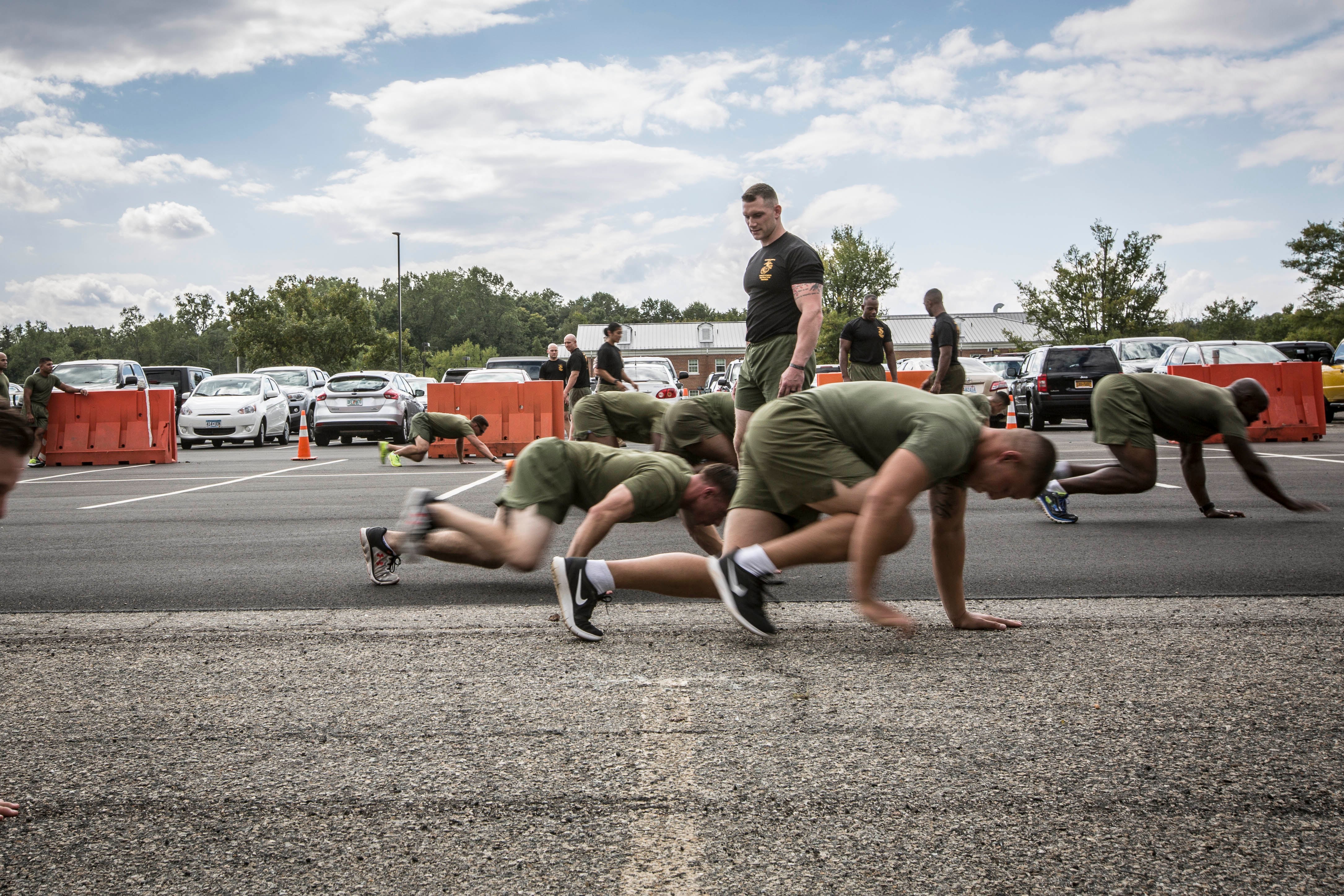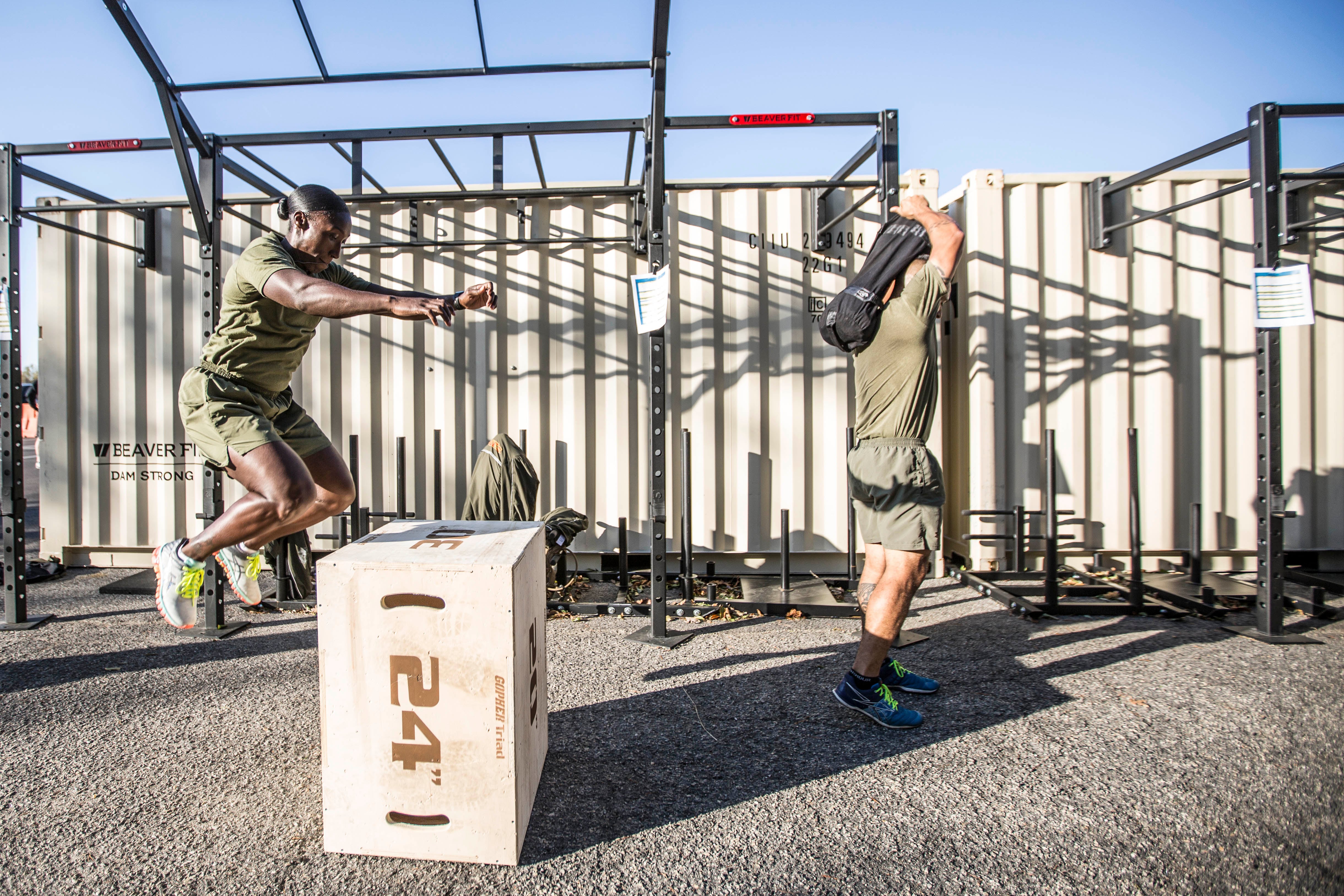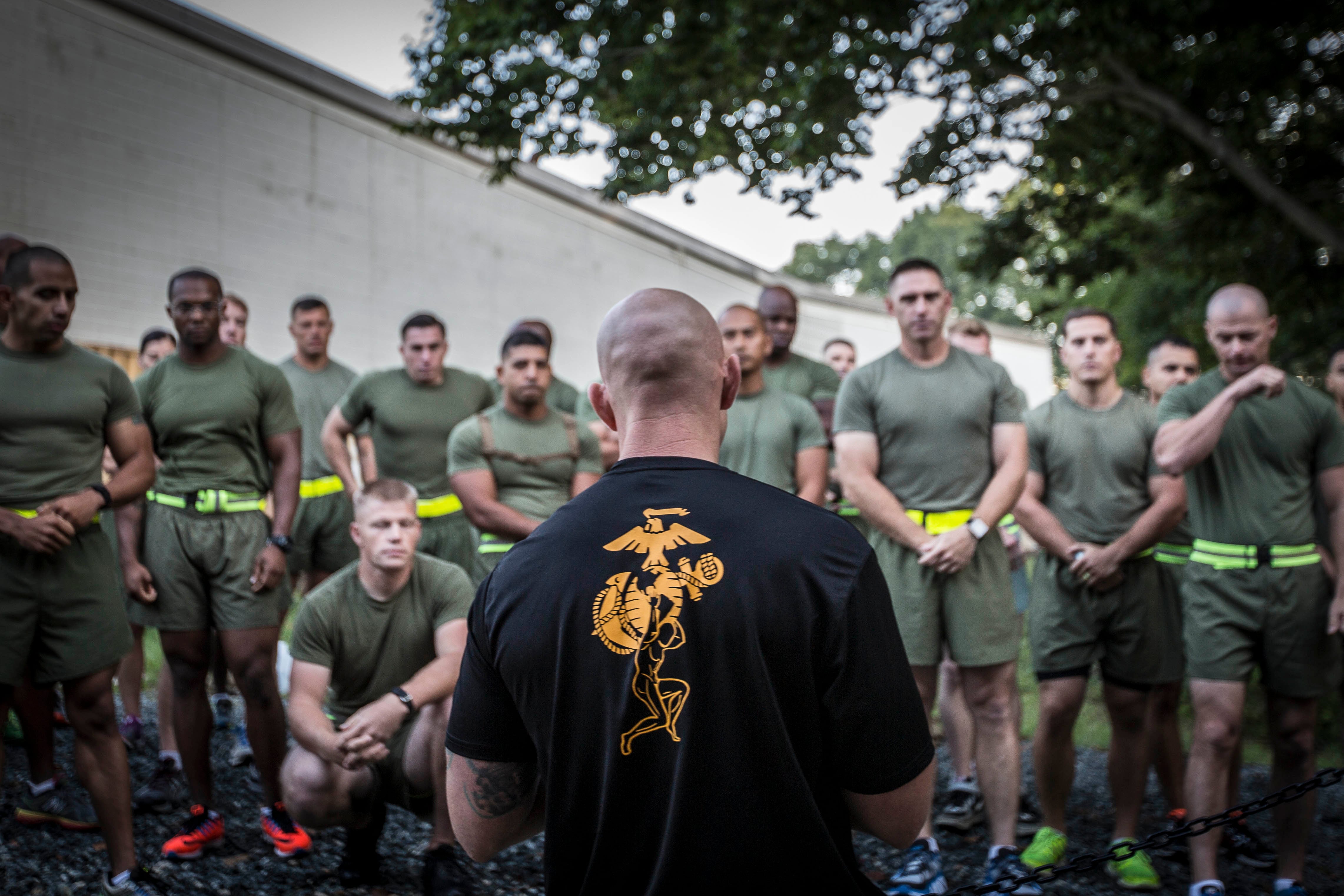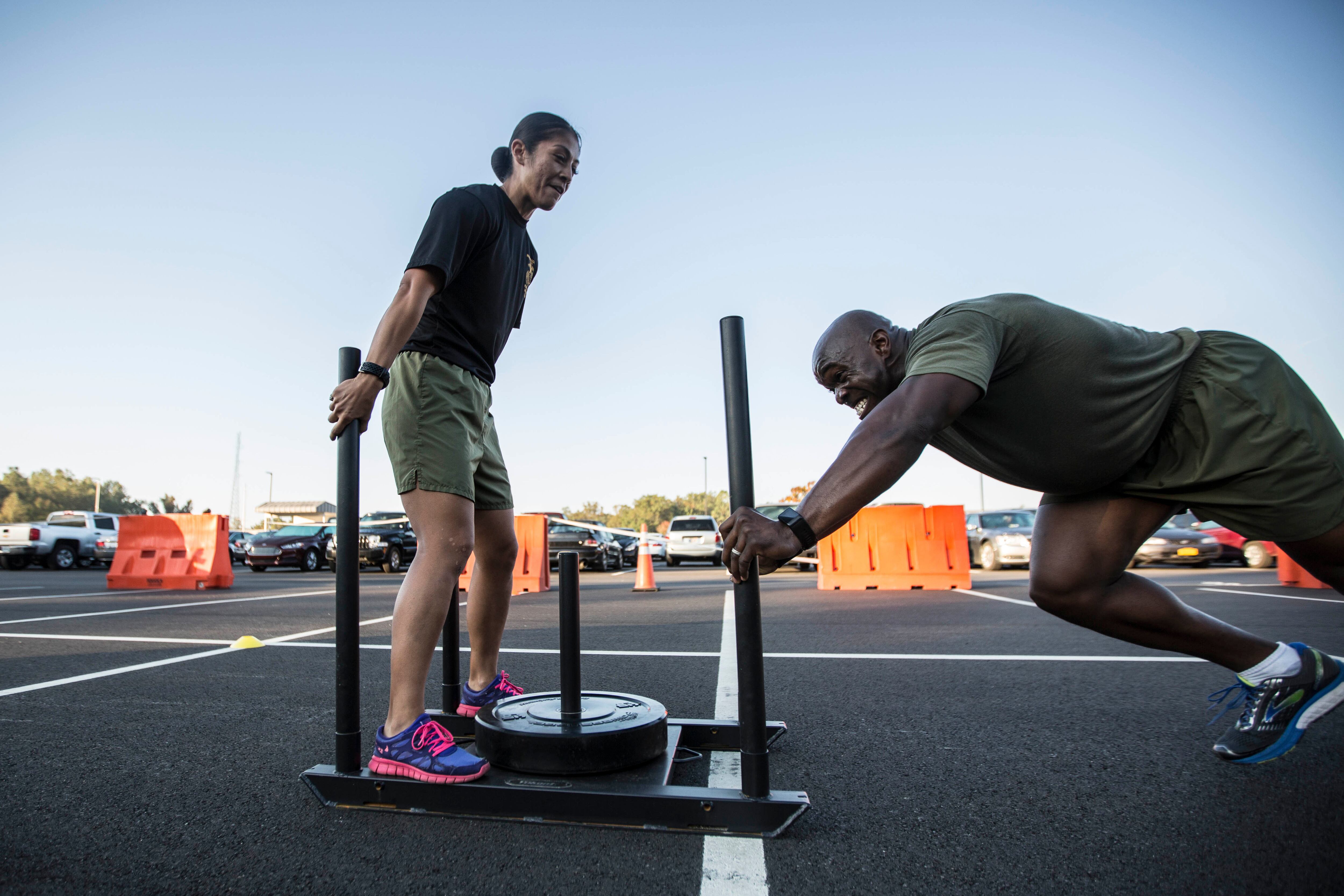MARINE CORPS BASE QUANTICO, Va. — Physical fitness is a top priority for leathernecks, but they may not be exercising correctly or eating the right foods, some experts warn.
That's part of why the service has started up a formal fitness leader program, to so Marine Corps is training fitness experts to advise them on how they can PT and eat better.
Marine Corps Times spoke to several of the service's first crop of force fitness instructors about how Marines can get stronger — fast. One major takeaway is that most Marines do not grasp the importance of stretching.
"Marines want to be bigger, stronger faster and being mobile and flexible is going to make them bigger, stronger and faster," said Gunnery Sgt. Daniel Sandlin, one of the instructors who graduated Friday.
Sandlin is one of a total of 50 senior enlisted Marines, who went through a five-week beta course at Quantico, Virginia where they learned the science behind fitness.
"I came here thinking I was a very intelligent individual and understood it because I like weightlifting; I like jiu-jitsu; I like martial arts," Sandlin said. "But then sitting in here, getting class on biomechanics, kinesiology — there are so many more effective and smarter ways that we can train our Marines."

Force fitness instructors learn correct movements and techniques.
Photo Credit: Sgt. Melissa Marnell, USMC Combat Camera.
Here are some of these fitness gurus' best tips and advice to keep fit for the fight.
Stretch it out
Sandlin and the other students learned about sprint mechanics. Being more flexible allows Marines to run better and avoid injuries, he said.
"Nobody comes to the Marine Corps and goes, 'I want to get injured,'" Sandlin said. "If you stretch, the likelihood of you popping a hamstring, pulling a quad is going to be less."
Staff Sgt. Tia Couch has been working out for 10 years. She loves weightlifting, but she didn't stretch that much until she started training to be a force fitness instructor, she said.
"I felt it was boring," Couch said. "To be completely honest, I just didn't feel like I needed to do it. It wasn't that cool thing to do. But being here, I see how it prevents injury and I'm in it for the long haul. So I definitely stretch now, even on my off-time."
One exercise tip she learned was flexing her foot toward the sky during leg exercises, such as lunges and knee huggers, she said.
"It actually helps to keep your glutes engaged as well as stretching out your calf and flexing your shin," Couch said. "I found that that really helped me."

Force fitness instructors go through a five-week course at Quantico, Va.
Photo Credit: Sgt. Melissa Marnell, USMC Combat Camera.
1st Sgt. Wayne Johnson has been in the Marine Corps for 20 years. He's noticed that the more flexible he is, the less sore he feels after his twice daily PT sessions.
The way to get Marines more enthusiastic about stretching is to explain that flexibility is an investment, like putting money in a bank, he said.
"It's not just for now; it's for when you're 20 years down the road, you can still walk and play with your kids," Johnson said.
Stay positive
The Force Fitness Instructor Course is the newest MOS school for Training and Education Command. The 50 new instructors will have a secondary MOS of 9019.
When they get back to their commands, the force fitness instructors will be able to tell others if they are doing exercises incorrectly as a way of preventing injuries, said retired Marine Lt. Col. Joe Shusko, director of the Force Fitness Readiness Center.
"How you lift a barbell, there's only one way," he said. "But a lot of people do it the wrong way. Our job is to teach them to be coaches. If they find out they're doing pushups wrong, or they find out that they're doing squats wrong, or if they find out that they're doing Olympic bar lifting wrong, they can correct them on the spot so that they don't have injuries."

Instructors show the proper way to lift an ammo can.
Photo Credit: Sgt. Melissa Marnell, USMC Combat Camera.
One lesson is that positive reinforcement is the best way to train Marines, said Gunny Sgt. Dimyas Perdue, chief instructor for the Force Fitness Instructor program.
"You can say, 'That was the ugliest squat I've ever seen;' or you can say: 'Hey, what I don't want to happen is for your knees to go forward of your toes. Could you try that again?'" Perdue said.
Without proper training, Marines can hurt themselves while exercising, Perdue said. Typical mistakes that Marines make during PT include using their back instead of their legs on deadlifts and putting too much weight in front of their bodies during squats, he said.
Coaching Marines
The goal is for the instructors to have a conversation with the Marines they are working with, even if they are used to doing an exercise differently, Perdue said.
"The solution is to say: I understand what has been done, but let's talk about the biomechanics of the body; let's talk about the structure of the body and how it works; let's talk about what the purpose of this exercise is," Perdue said. "Now, looking at what the purpose of this exercise is, looking at how the body works, do you think it makes sense to do it this way? OK, now let me show you another way to see if this works."
Having a positive attitude is an important part of force fitness instructors' job of walking Marines through the right way to do an exercise, said Staff Sgt. William Morris.

Marines training at the Force Fitness Instructor Course at Quantico, Va.
Photo Credit: Sgt. Melissa Marnell, USMC Combat Camera.
Teaching proper movement and techniques is particularly important for exercises involving weight, such as squats and the bench press, he said.
"Just saying: 'Hey, listen: You can still move that massive amount of weight, but there is a correct way to do it without injuring yourself;' that would be the biggest thing to keep Marines in the fight," Morris said.
Marines should understand that the force fitness instructors are there to help them with exercises and nutrition, not "bash them" for not being fit enough, said, Gunnery Sgt. Joshua Rios.
"If it happens to be a Marine that's overweight — or just a Marine who's not overweight, who just wants basic guidance — they should know they can come to us and we'll facilitate that and help them out with any type of plan that they want to work through," Rios said. "If it's a marathon runner, bike rider, anything, regular PT, weightlifter — we can help."
Eating right
Exercising right is only part of the battle. Marines who want to get stronger also need to eat properly.
"One thing I found out here: You can't out physical train a poor diet," said Gunnery Sgt. Jermarcus Tate. "I saw some of the guys in the course who were working hard and had a good diet. I saw the progression. I saw the results."
Tate was surprised to learn that eating just protein is not the right way to put on muscle, he said.
"I just thought about protein; go to the gym; get bigger," Tate said. "It's the only thing I ever knew."
At the course, he learned that a proper diet distributes calories from carbohydrates, proteins and fats, he said.

An instructor and his students at the Force Fitness Instructor Course at Quantico, Va.
Photo Credit: Sgt. Melissa Marnell, USMC Combat Camera.
"I thought all fats were bad, but throughout this course, they taught us when we should eat protein; when we should consume carbohydrates and the percentage breakdown: 50 percent carbohydrates; 25 and 25 of the fats and proteins," Tate said.
The force fitness instructors are taught food should not be considered taboo, but some foods should only be consumed in moderation, said Perdue, who is the FFI course's chief instructor.
"What we've been teaching them here is that there are better options," Perdue said. "If you want that pizza, don't go to Pizza Hut and buy it. Go to the store; buy your whole wheat tortilla; get your marinara sauce and you put it on there. You cook your vegetables. You cook your meat. Now you've cut back a few hundred calories per slice."
Eating healthy is not the same as trying to be thin, he said. Sumo wrestlers actually have healthy food regimens.
"It's essential to have so much body fat, but that's tailored to whatever your activity is," Perdue said. "If you're a football player and a down lineman, you need to maintain a heavier weight to be able to do it. But those guys can still lift; they can still run; they have healthy hearts; they get their lipids tested all the time.
"The goal of this with the nutrition isn't to make everybody skinny minnies. That's not what we're trying to do. The goal of this is to be able make overall fit athletes. We're all not going to look the same. Not everyone is going to look like a wide receiver. We may have some people that look like running backs. We may have some people that look like strong defensive lineman. We just want everybody to understand fitness for their bodies."




